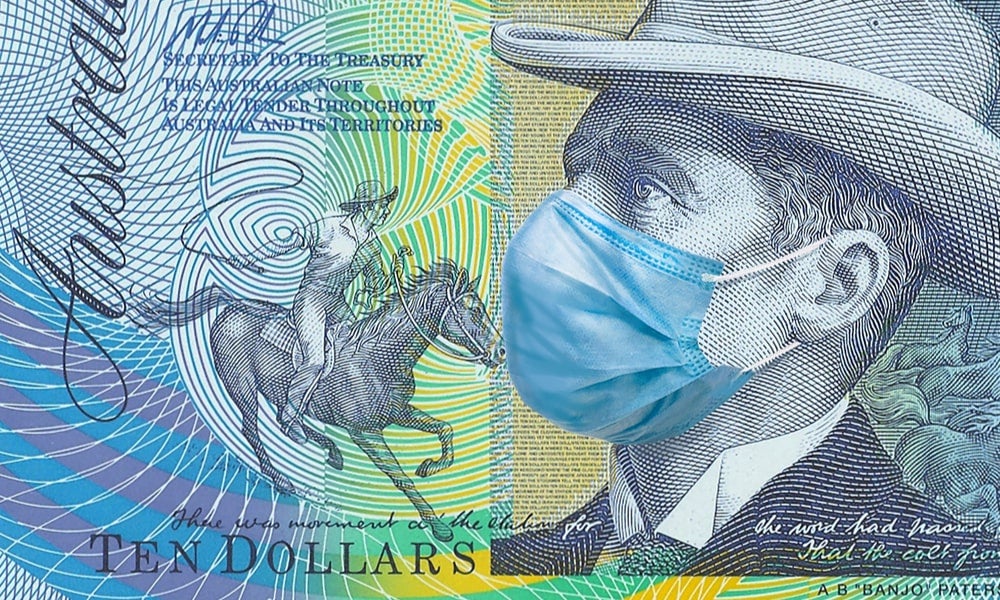How the ball and chain of COVID debt impacts Australians
The amount of national debt per Australian has increased more than tenfold to $34,107 at the end of 2022, and this will impact Australians in a number of ways
Australia’s national debt has ballooned over the past two-and-a-half years to record levels, with gross debt increasing from $534.4 billion in March 2019 to $894.4 billion in December 2022 alone. According to the Australian Office of Financial Management, this figure rose marginally to $886.7 billion in late November – the highest level relative to GDP (gross domestic product) since the Second World War. Even the government has acknowledged that “both the size and servicing of this debt will be an issue for future Australian governments.” To put this into perspective, the amount of national debt per Australian has increased more than tenfold from $3260 in 2007-08 to $34,107 as of December 2022.
Record levels of debt affect Australians in a number of ways. In its most recent Budget Review 2021–22, the government said it may have to divert more revenue to meet interest expenses, and that “this may lead to a need to increase taxes, cut spending, sell assets and/or further increase debt”. This point was recently underscored by the International Monetary Fund (IMF), which said at least 100 countries will have to reduce expenditures on health, education and social protection in order to try and meet debt repayments.
Whether debt is paid back for political or accounting reasons, this leaves less money for the Australian government to spend on national priorities, according to Gigi Foster, Professor of Economics at UNSW Business School. “When you service national debt, you are taking money from other possible line items of expenditure. That’s the reason why people don’t like to accumulate debt,” she said.

“Now, I don’t have a problem with debt in general, as long as whatever the money was spent on initially that incurred the debt was something that invested in the productivity of the country. If you grow the productivity of the country through your investments, then you will reap the returns of that in future years. And you’ll be able to cover the debt repayments without cannibalising your other expenditures as much, because you will have ‘expanded the size of the pie’, as we say.”
Any government investment project that is financed by debt and delivers high returns to “Australia at large” in the future would potentially count, explained Prof. Foster, who gave examples of building high-quality, accessible roads that lower future transactions costs, investing in high-quality primary schooling or early learning that increases the earnings potential of future generations, or even investing in higher education (assuming that there is a high public return of public higher-education investments, a point on which Prof. Foster noted there can be disagreement among reasonable people).
“It’s easier to think of such examples in a developing country: relatively cheap things like clean water, cleaning birthing services, and indoor lighting can significantly increase population welfare and hence potential tax receipts in future years when invested in today, whether using debt, donations, or otherwise,” she said.
Read more: Is Australia’s coronavirus bill a debt burden future generations must bear?
Problems with the current national debt
However, the problem with the size and scale of the current debt is that there is little to show for it, according to Prof. Foster. “The issue with this debt is that it was incurred to cover expenditures that were simply made for us to tread water during the COVID period and try to staunch the wounds that our governments inflicted upon us,” she said.
For example, the government spent $170 billion on social security and welfare in 2018-2019, but this increased substantially to $227 billion in 2020-2021, according to the Australian Government expenditure Budget Review 2020–21 Index. This same index said the government spent $34.5 billion in 2018-2019 as part of its economic response to COVID (despite the fact that COVID did not reach Australia till early 2020) and this figure increased to $41.7 billion in 2020-2021 and is expected to increase to $43.3 billion in 2023-2024.
“This debt hasn’t delivered productivity gains; if anything, we’ve gone backwards significantly in terms of our productivity potential for wealth generation in the country. So we’ve made that problem worse, not better. I think it was a huge mistake. I don’t like this current amount of debt that we’ve got, because I think it will cannibalise future expenditure, including everything that the government usually spends on to contribute to length of life and quality of life,” according to Prof. Foster, who said the government should be focusing on these two important factors instead.

“It’s young Australians who are going to suffer in the long-term because they are saddled with that debt that they’ve got to pay back. This is an intergenerational debt, so now is not a good time to be a young person in Australia. I wouldn’t be surprised if we start bleeding young people to overseas locations that are more hospitable and offer them more opportunities.”
The relationship between debt and recession
Most governments around the world plunged their countries into debt through COVID and are now attempting to pick up the pieces and restore some sense of normality to their economies. However, the reality is that global debt is at “dangerously high levels” according to the World Economic Forum, with the Institute of International Finance putting global debt at about US$290 trillion for Q3 2022.
This point was underscored by Prof. Foster who said record levels of national debt are putting tension on the relationship between central banks and their governments “who have been spending like there’s no tomorrow for the last couple of years”, she said. “As a result, I think it would really take a bit of a minor miracle to avoid a global recession at this point.”
Read more: Australia’s coronavirus bill: who is the government in debt to?
There are a number of important contributing factors to recessionary pressures, including debt, strong inflation, labour market uncertainty and hefty interest rate rises from central banks which have “started to panic”, according to Prof. Foster. “There are a lot of signs that we are headed for a global recession. I don’t really see a way to avoid that. And that will touch – to a greater or lesser extent – pretty much all of the world’s countries. That’s very sad. And I don’t like to say it, but basically this is the harvest that we are reaping from our mismanagement the last couple of years,” she said.
Strengths and weaknesses of the Australian economy
Despite record levels of debt, the Australian economy is in better shape than many others around the world and has a number of factors in its favour. “You will see some people calling for more insular policies, such as more agricultural production here in Australia – and we do already eat a lot of our own food. In that sense, we’re a bit more protected than some countries that rely on imports from overseas to feed their populations,” said Prof. Foster.

Natural resources exports are another economic strength, but it is also an area in which Australia is “pretty exposed”, according to Prof. Foster. Tourism has been another source of revenue, which was torpedoed by state and federal government lockdowns and border closures through COVID – but which has recovered somewhat this year. Similarly, the outlook for education has also improved with the lifting of international border closures but continues to be threatened by cooling relations with China.
More generally, services, hospitality and retail will slow as people cut back on spending in order to reduce pressure on their household budgets. “So people might cut that extra coffee after lunch at work, for example – some sort of special thing you buy for yourself. That’s a service that you might cut back on because you’re more focused on feeding a family, covering the rent and paying for electricity bills,” said Prof. Foster.
“And the housing market is a perennial boil on the neck of Australian households. That’s been a problem for a while, and we need some serious rethinking of our policies on housing development in order to release more supply for needy families, including young people who have really borne the brunt of misguided COVID policies.”
Subscribe to BusinessThink for the latest research, analysis and insights from UNSW Business School
Prof. Foster said the government needs to refocus on what Australia needs to do in order to weather the recession, rather than thinking the economy can be protected from a global recession: “just like we entered that fantasy of thinking we could eliminate COVID,” she said. “We can’t. We just have to dispense with those utopian visions of how the world works and get busy with actually helping the country.”
Gigi Foster is a Professor in the School of Economics at UNSW Business School. She works in diverse fields including education, social influence, corruption, lab experiments, time use, behavioural economics, and Australian policy. For more information please contact Prof. Foster directly.
